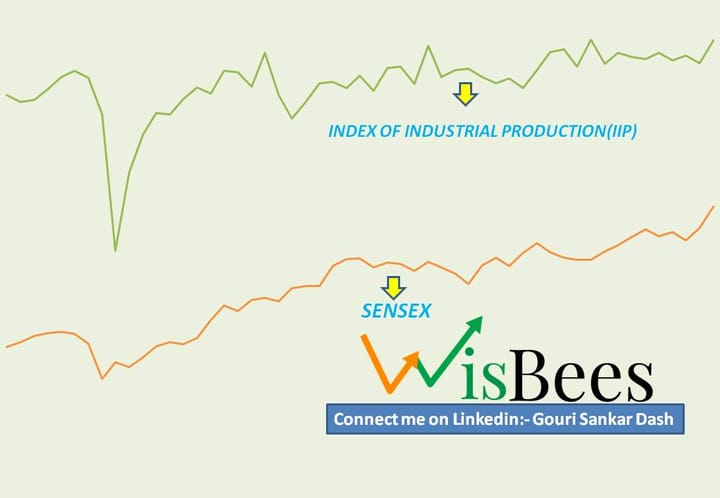The Investment Opportunity brought by the rising Defence Sector of India- Khullja Sim Sim.

The story is a discussion between two close friends, Abhay( a Software Engineer keen to invest) and Sankar( an experienced investment professional).
Abhay: Bro, have you seen the defence stocks charts? What a rally bro!! Why a sudden rise in Stock Price in last few years?
Sankar: Yes, Buddy, you are right. Defence stocks are growing like anything. Let me take you to a bit of the past to answer your why. In the Ramayan, Rama and Laxman had to fight a war. They didn’t have an Army, so on the way, they had to make many allies and tie-ups, such as with Banara Raj Shugriv and many others, to fight the War.
In today’s real world, not being a self-reliant country in Weapon technology is a big threat to a country’s national Security. In 1965, the USA refused to supply weapons to India in the Indo-Pak war; however, the Soviet Union helped and sold us the weapons. That saved us at that time. But we can not always depend on other countries to sell us the firepower without indigenously developing them. In FY 22-23 budget, the Ministry of Defense had the greatest allocation of 13% among all core government departments, which has been the main driver of this growth in stocks. This Year in 2023-2024 Budget Defence sector got 5.94Lakh Crore , a 13% increase than previous year Budget.
Abhay: But India has a long history of importing defence equipment. Is that changing now?
Sankar: Yes, brother, there is a paradigm shift in the procurement of defence equipment in India. Due to recent geo-political tensions with China, we are still one of the largest importers contributing to 11% of import in arms sales globally. But, simultaneously, we have given more weightage to exports than ever.
Let’s ask a few questions to ourselves first. Is India aspiring to be the world leader in the near future? Your answer to the Question will be a Big Yes. A large domestic market is our biggest strength, and we are catching up with technology, manufacturing, Industrialisation, and many other things at par with leading countries. But are we self-reliant enough on our Firepower to be called a World leader? As of 2021, our neighbour country China, which is also the largest threat to our border security, is spending 293 Billion USD on Defence, and we are spending almost 76.6 Billion USD. It is not very less, as 76.6 Bn USD is the third highest spent defence budget in the world, but it is not enough. Thanks to Modi Government, India is rapidly moving from being a Firepower importer to an exporter. In the year 2020, the Government of India made it mandatory for the Indian Armed forces to use 64% of its capital in procuring defence equipment that is domestically developed.
Abhay: That’s good to know, but Government should have taken those steps a little early. “ Der aaye durust aaye” India has finally reduced its import dependency on defence acquisitions. Sorry to interrupt bro; you continue.
Sankar: Rightly said!!, and please interrupt.
The Defense sector of India is now one of the super fast-growing sectors, with solid backing from Government itself. So the sector and its stocks showed outstanding growth in the last two-three years. India has finally reduced its foreign dependency on defence acquisitions with many government operations such as “Make in India,” “Atmanirbhar Bharat,” etc. In 2017-2021 there was a decline of 21% in total imports from 2012 to 2016. This majorly happened with the government’s growing emphasis on Private Sector manufacturing defence equipment and various state-owned companies.
Abhay: Stop there. Did you mean there were no private players earlier in the defence sector?
Sankar: Yes, in the 1956 Indian Defense Resolution Policy, arms and ammunition production access was only given to public sector companies. In the 21st century, private companies were given access to produce for defence for the first time. Still, real innovation and complex technology sharing have been done in the last few years, and procurement of indigenous products has been prioritised. The licensing of Private companies is easier than ever for defence production.
India is targeting a Defense production value of 25 Billion USD by 2025 from 11.85 billion USD, as per 2019 data. DRDO and many PSUs share their technology with private Indian companies to produce defence equipment. Indian private companies can now tie up with foreign companies to get advanced technology. The FDI into the private sector increased to 74% from the 49% limit to boost defence start-ups. Lowering FDI restrictions in the defence sector increases goodwill among friendly countries to choose India as a defence equipment supplier.
Abhay: Ahh, the opportunity seems so strong. You said India is a supplier; that is good to know. Can you talk more about where we are exporting and what?
Sankar: Yeah bro, India is targeting to produce almost 70% of defence requirements domestically by 2026 and increase the current exports by 15Bn USD by then. We all know today’s geopolitical tensions. India is facing many threats from land, air, and sea because of its geographic structure. That’s a reason why there is high domestic demand. But along with becoming self-reliant, we have started being potential exporters to our neighbouring countries. Import demand is likely to grow more in smaller countries, as they are worried about their safety and looking to India as a strategic partner to import defence equipment at low cost with good quality. Our private players and Public Sectors have played a crucial role in defence exports.
Vietnam, Indonesia, Philippines have started importing from India from light helicopters and tanks to Brahmos-like supersonic Missiles. UAE and Saudi Arabia-like countries are also keen on ordering Brahmos and Akash missiles. Countries in Asia and Africa are supposed to be vital buyers. Since Modi’s Govt took control, there has been a Six times rise in Indian Defence Arms export. We are currently exporting to more than 75 different countries across the world.
Abhay: Ohh …. That’s a lot of things going on. If I let you talk more, you'll not stop. Now I get the Macros and demand that this sector possesses. Bro, Let’s come to the main point where I should put my money. What are some good Companies in this sector?
Sankar: I knew you would be eagerly waiting for this moment. In this sector, I found two key players who have a dominant presence: Hindustan Aeronautics Limited(HAL) and Bharat Electronics Limited(BEL). From the source IBEF website, we found the below data, which shows the gradual increase or decrease in the value of production of defence production companies.
HAL is a leader in the defence sector with continuous growth in the value of production. Tejas Aircraft and Dhruv light helicopters have been some of the critical successes of the business of HAL. BEL also has shown massive growth in the value of production and supplies of electronic equipment and systems for the Defense sector of India.
Apart from these Government companies, Data Patterns, MTAR technology, and Mahindra Defence are some of the notable defence companies in India. Ashok Leyland is the largest supplier of Armed Vehicles to our Armed Forces.
Abhay: Bro, Please finalise one. Don’t be diplomatic; just tell me where you see the Opportunity.
Sankar: My first preference is HAL. Let me talk something about it, why I feel so.
Hindustan Aeronautics Limited:
Looking at Foreign interest in our Fighter Aircraft, the order pipeline is so intense along with the government of India’s Indigenisation Pressure. HAL has a market share of 87.55% in its category.
In the last three years, the net income has grown with a CAGR of 14.12% compared to the industry average of 12.36%. In the last three years, the profit growth has been 29%.
Despite an extended rally in the last few years, I am bullish on this stock because its PE multiple is still less than 15x. The industry PE is above 57x. ROE and ROCE are nearly 30%, making the stock a long-term pick for your portfolio. Profit from Operation increased to 9834Cr from 6754Cr with no Debt.
In the Defense sector, it is essential to keep innovating and focus on the R&D sector. HAL impressively spends 6% to 7% of its Revenue on R&D and has increased its R&D reserve from 10% PAT to 15 %PAT.
They now have a strong Order book of about 85000Cr, out of which 45000Cr orders are in the advanced stages of Finalisation.
Bharat Dynamics Limited:
Bro, my second pick is Bharat Dynamics limited. The company fundamentals are changing after the Government's deep focus on Indigenisation. They currently have a strong order book of 12000 Cr, which is good compared to their size.
The company produces many surface Air missiles for the Indian Navy and other Armed Forces. They make Akash Missiles and Konkurs anti-tank missiles indigenously. Their order book is supposed to reach 15000Cr in 2023 after the finalisation of the deal with Govt of India.
With a solid sales increase, the company’s Operating Profit is doubled since last year. Before 2020 the company's sales were deteriorating, but after the focus on self Reliance, there was a sizable rise in order inflows, which is continuously increasing.
Abhay: Thanks for the insight. My last question- Do you also think our Shipbuilding companies will show good growth with the indigenisation of the Indian Navy?
Sankar: Yes, that’s a good question asked. With a strong order pipeline in the Indian Navy, Mazagon Dock and Cochin Shipyard-like companies possess a more robust growth outlook in coming years.
Disclaimer: All the discussions are fictional, and we don’t suggest any stock buy or sell. This is just for information purposes only.



